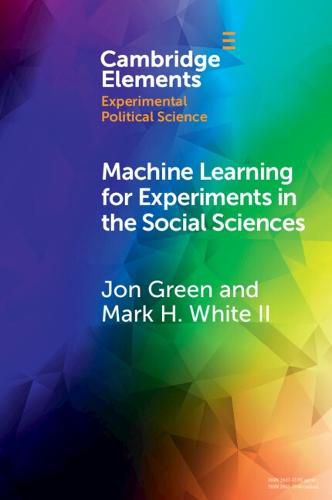Readings Newsletter
Become a Readings Member to make your shopping experience even easier.
Sign in or sign up for free!
You’re not far away from qualifying for FREE standard shipping within Australia
You’ve qualified for FREE standard shipping within Australia
The cart is loading…






Causal inference and machine learning are typically introduced in the social sciences separately as theoretically distinct methodological traditions. However, applications of machine learning in causal inference are increasingly prevalent. This Element provides theoretical and practical introductions to machine learning for social scientists interested in applying such methods to experimental data. We show how machine learning can be useful for conducting robust causal inference and provide a theoretical foundation researchers can use to understand and apply new methods in this rapidly developing field. We then demonstrate two specific methods - the prediction rule ensemble and the causal random forest - for characterizing treatment effect heterogeneity in survey experiments and testing the extent to which such heterogeneity is robust to out-of-sample prediction. We conclude by discussing limitations and tradeoffs of such methods, while directing readers to additional related methods available on the Comprehensive R Archive Network (CRAN).
$9.00 standard shipping within Australia
FREE standard shipping within Australia for orders over $100.00
Express & International shipping calculated at checkout
Stock availability can be subject to change without notice. We recommend calling the shop or contacting our online team to check availability of low stock items. Please see our Shopping Online page for more details.
Causal inference and machine learning are typically introduced in the social sciences separately as theoretically distinct methodological traditions. However, applications of machine learning in causal inference are increasingly prevalent. This Element provides theoretical and practical introductions to machine learning for social scientists interested in applying such methods to experimental data. We show how machine learning can be useful for conducting robust causal inference and provide a theoretical foundation researchers can use to understand and apply new methods in this rapidly developing field. We then demonstrate two specific methods - the prediction rule ensemble and the causal random forest - for characterizing treatment effect heterogeneity in survey experiments and testing the extent to which such heterogeneity is robust to out-of-sample prediction. We conclude by discussing limitations and tradeoffs of such methods, while directing readers to additional related methods available on the Comprehensive R Archive Network (CRAN).